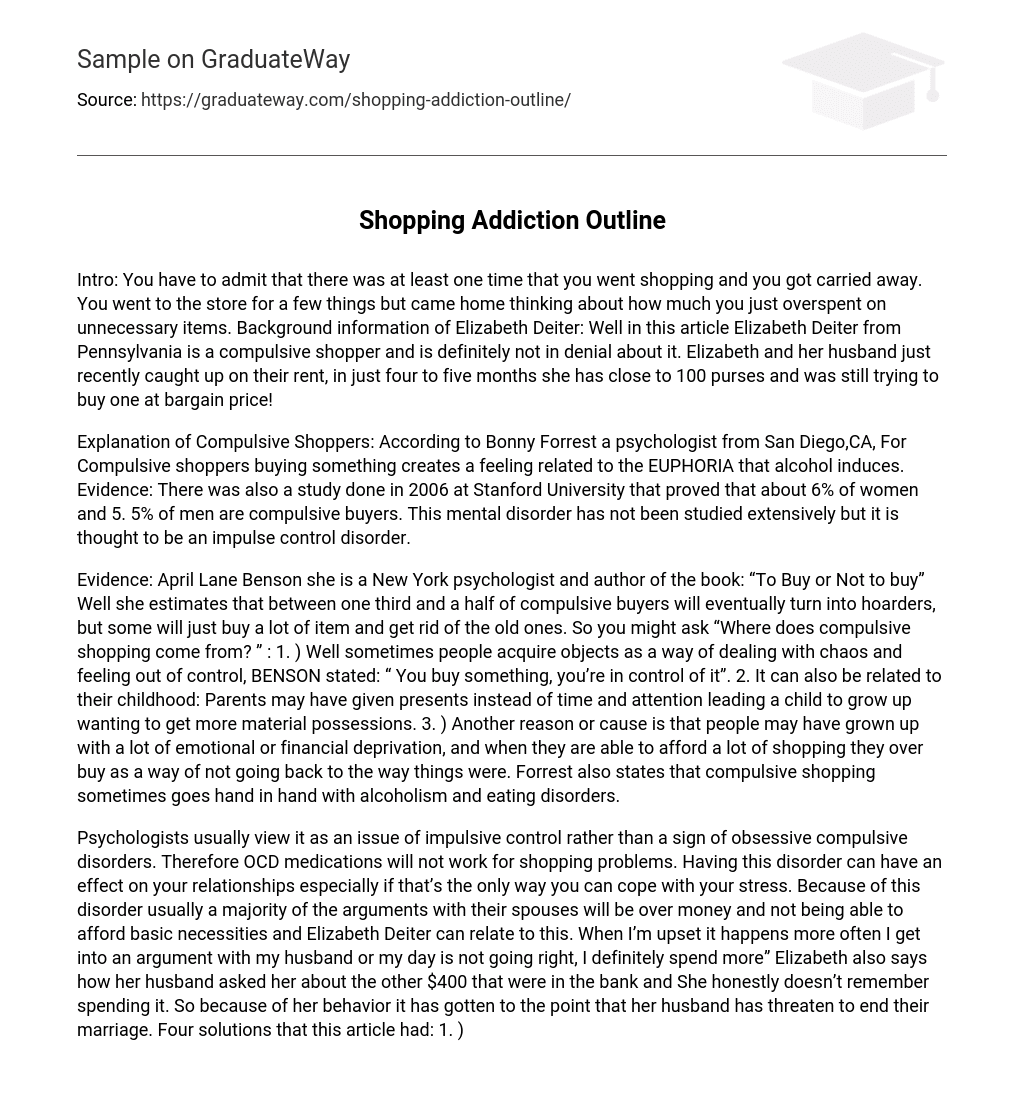Intro: It is undeniable that there have been occasions when we have gone shopping and become carried away, returning home with a realization of overspending on unnecessary items. Now, let’s delve into the background information of Elizabeth Deiter, a compulsive shopper from Pennsylvania who openly acknowledges her behavior. Despite just recently catching up on rent with her husband, Elizabeth possesses close to 100 purses within a span of four to five months, and she still persistently seeks to purchase one at a discounted price.
Psychologist Bonny Forrest from San Diego, CA claims that individuals with compulsive shopping tendencies derive the same kind of pleasure as those who consume alcohol. A study carried out at Stanford University in 2006 reveals that around 6% of women and 5.5% of men can be categorized as compulsive shoppers. Despite being classified as an impulse control disorder, this psychological condition has not been extensively researched.
According to April Lane Benson, a psychologist and author in New York, research indicates that between one third and half of individuals with compulsive buying tendencies will eventually transition into hoarding. Others may simply replace their old belongings with new ones. Several factors contribute to the roots of compulsive shopping. Firstly, some people use acquiring objects as a means of regaining control and order in their lives. As Benson explains, “You buy something, you’re in control of it.” Secondly, childhood experiences can play a role, where individuals grew up receiving material possessions instead of quality time and attention from their parents. This leads them to develop a desire for more material possessions in adulthood. Lastly, those who have experienced significant emotional or financial deprivation throughout their lives may engage in excessive shopping as a way to avoid returning to previous circumstances. Additionally, Benson highlights the connection between compulsive shopping and alcoholism as well as eating disorders.
Psychologists typically view shopping problems as a manifestation of impulsive control issues, rather than a symptom of obsessive-compulsive disorders. Consequently, medications commonly used to treat OCD are not effective in addressing these shopping problems. The presence of this disorder can significantly impact relationships, particularly if shopping is the primary coping mechanism for managing stress. As a result, arguments between individuals with this disorder and their spouses often revolve around financial difficulties and an inability to afford essential items. Elizabeth Deiter can personally relate to this situation, stating that when she is upset or experiencing a bad day, she tends to spend more money. Elizabeth also recalls her husband questioning her about $400 missing from their bank account, but she genuinely has no memory of spending it. Subsequently, her behavior has reached a point where her husband has threatened to end their marriage. This article proposes four potential solutions: 1.)
When shopping, it is recommended to have a companion to prevent overspending. Using cash can assist in managing expenses. Waiting for 24 hours before purchasing unnecessary items is advised. Online support groups such as blogs (DEBATORS ANONYMOUS) can be valuable. However, it should be noted that these solutions may not be effective for everyone. The article argues that individuals with a shopping addiction are especially susceptible during the holiday season due to heightened pressure to make purchases. One critique of the article is its lack of original viewpoint and practical application.
The article was easy to understand and relatable. The author effectively presented the argument by using reliable sources, such as statistics and information from psychologists. One area for improvement would be to include the perspective of the woman’s husband, to explore how he copes with her shopping addiction problem. This would provide another side to the situation. Overall, the article was satisfactory.





